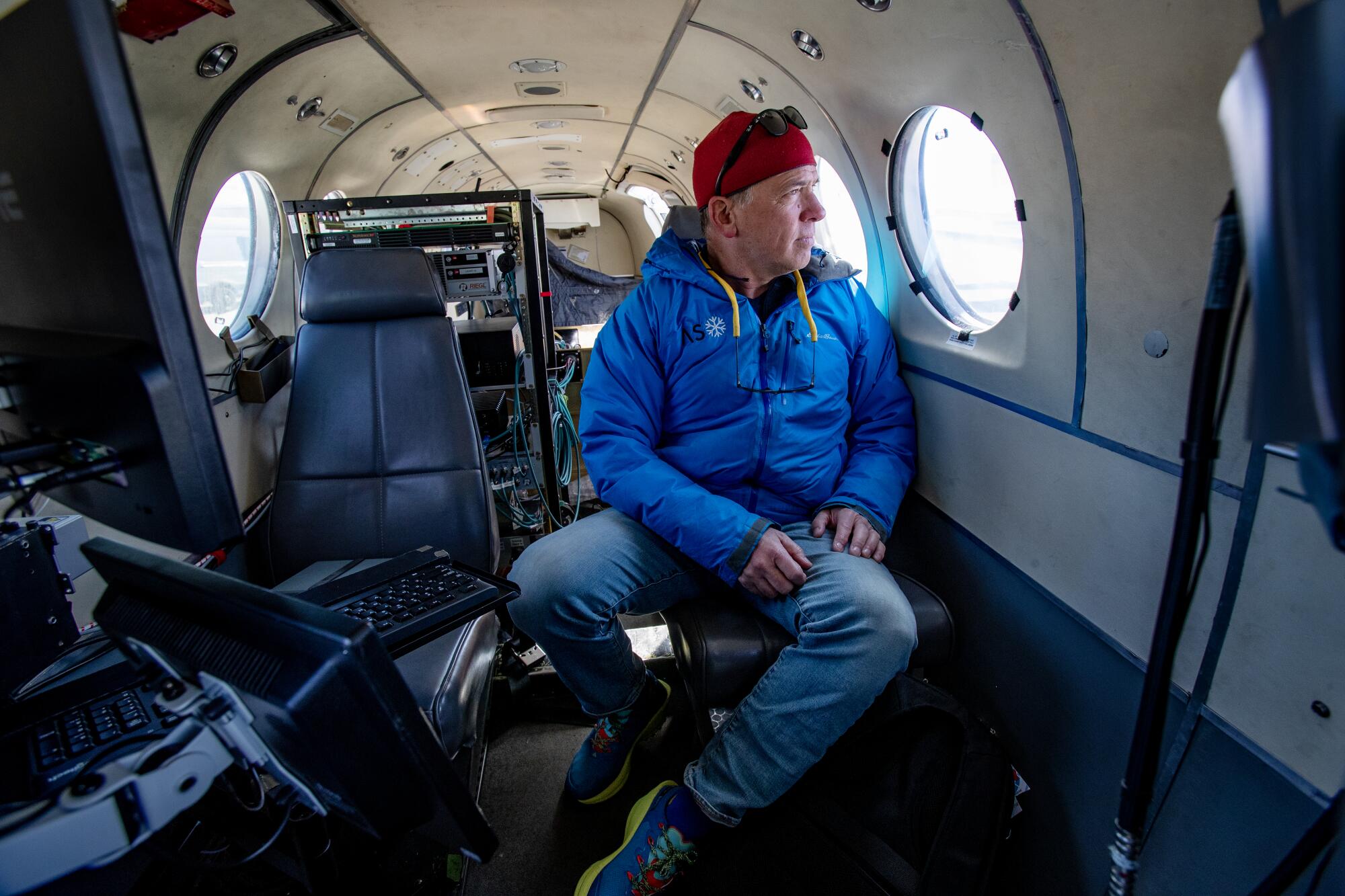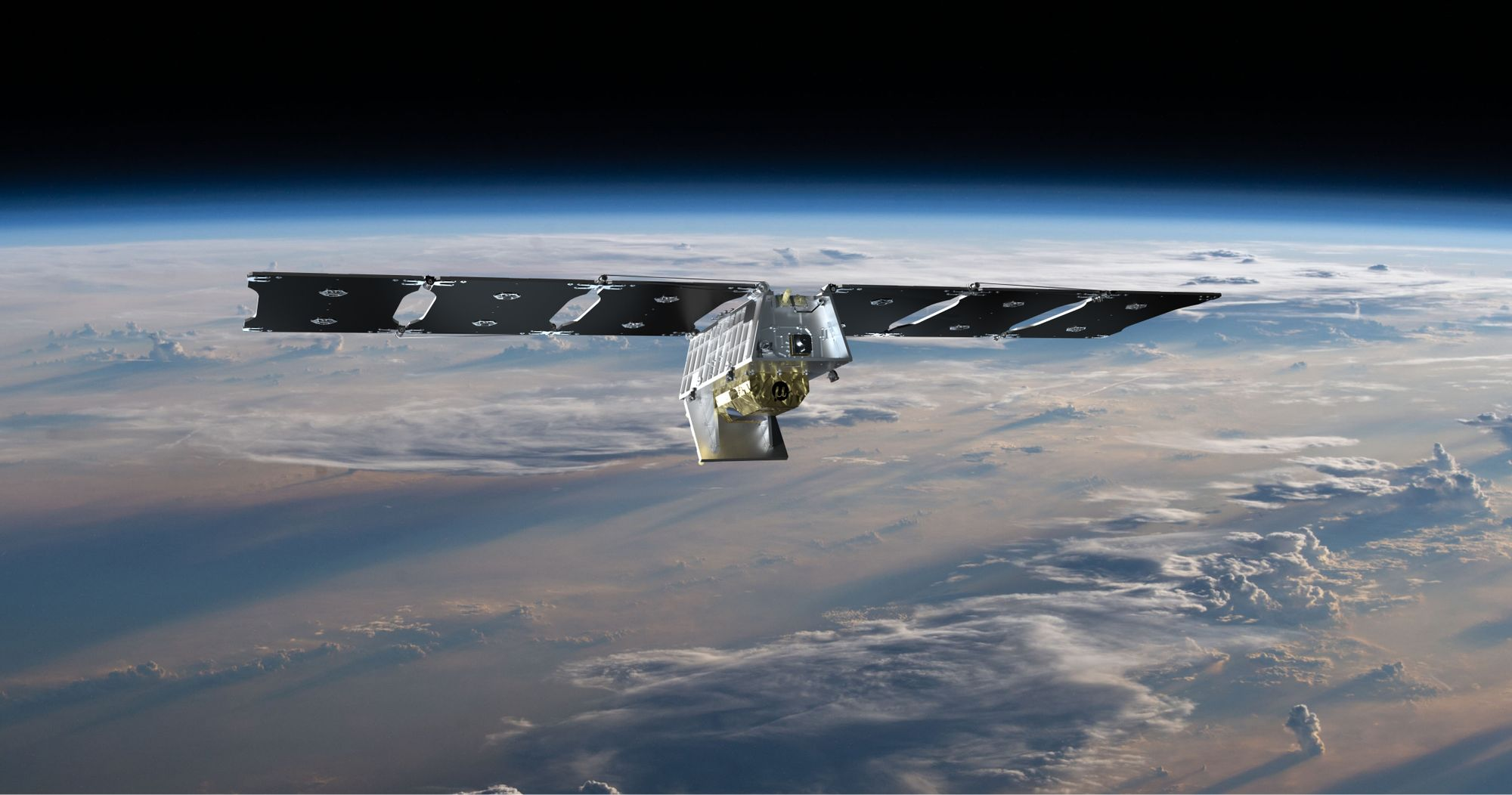Never before have Californians had so much climate information at their fingertips: Planes fly over the Sierra measuring snowpack with lasers; AI-enhanced cameras scan the landscape for wildfires; and satellites circle overhead collecting detailed images of conditions in real time.
But even with all of these tools, the Golden State lacks a centralized database where researchers, policymakers, emergency services, and the public can easily access this wealth of information.
A project called California Climate Information System, or CalCIStried to change that, but instead became a victim of the state budget crisis.
Among the cuts aimed at closing California’s $46.8 billion deficit was a joint effort between the California Natural Resources Agency and NASA’s Jet Propulsion Laboratory that would have made California the first state in the nation to create an open-source, continuously updated climate data center.

Aggressive and shocking reports on climate change, the environment, health and science.
Now, environmentalists are mourning the loss of CalCIS and demanding that it be funded next year, if not sooner. They say the project is essential if California wants to prepare for the extreme dangers coming from climate change: worsening wildfires, droughts, floods, heat waves and rising sea levels.
“In an era when the global climate crisis continues to worsen over time, it is imperative that the state use the best, most current remote sensing and climate data available to make important, timely adaptation and mitigation decisions that will best protect public health, property, natural resources, and biodiversity,” reads a letter signed by more than 30 state scientists and experts, who urged Gov. Gavin Newsom and other officials to save CalCIS from the guillotine.
Among the project’s staunchest supporters is Terry Tamminen, a former secretary of the California Environmental Protection Agency who now serves as president and CEO of the Los Angeles-based technology group. High seasHe described the decision to cut funding for the program as a decision to “spend money and spend little,” noting that CalCIS could help the state avoid billions of dollars in property losses and potentially save lives.
“I understand that in difficult budget years you have to cut back on things that may be considered non-essential, but climate change is a very current and urgent issue, but also a long-term one that we will have to deal with,” Tamminen said.
He added that NASA, JPL and many other international institutions and agencies are constantly developing new sources of Earth science monitoring, measurement and reporting, “and if we don’t integrate all of that latest data into our system to predict what’s going to happen and then take adaptive action, we’re just going to be flying blind.”
The project is far from the only climate-related item facing budget cuts as Newsom declares a fiscal emergency in the state. While a detailed version of the final budget has yet to be released, the $297.9 billion spending plan announced this week says at least $3 billion to be diverted clean energy and other climate-related programs.

Thomas Painter, founder of the Airborne Snow Observatory, sits inside one of the planes used to collect detailed data on snow cover.
(Gina Ferazzi/Los Angeles Times)
TO floor report A bill released by the State Assembly budget committee outlines some of those cuts, including $75 million from regional climate resilience efforts; $14 million from extreme heat awareness campaigns; $10 million from grants for climate adaptation and resilience planning; as well as $3 million from a climate health and monitoring program.
However, the plenary report notes that the proposed budget preserves approximately $45 billion of the original $54 billion climate package approved in 2022, including funds for sustainable agriculture, water recycling, offshore wind infrastructure and “investments “Historical achievements in sea level rise and ocean protection, forest fire prevention, electric vehicles and public transportation.”
The report also confirms that $18.3 million will be cut from CalCIS, the total amount that had been allocated to the first phase of the project, which was essential to get it off the ground.
The cut was “one of several decisions that were necessary to close the budget deficit, and not any kind of implicit or explicit statement of an underlying political concern,” said HD Palmer, a spokesman for the California Department of Finance.
Mark Gold, an adjunct professor at the UCLA Institute for Environment and Sustainability who helped develop the memorandum of understanding between JPL and the California Natural Resources Agency in 2022, said CalCIS’s relatively low price tag was built on existing tools, technologies and satellites, many of which have already been bought and paid for.
“Compared to the discussions and debates about a $35 billion to $50 billion deficit, this is kind of a rounding error, but it’s very important,” Gold said. “I cannot emphasize enough how important this effort is to bring California into the 21st century for effective adaptation and mitigation.”
The first phase of the project, which cost $18 million, would have created the CalCIS framework, including data aggregation and development of some data products, he said. The second phase, which would have required additional funding, would have filled more gaps with ground and aerial information and trained state staff to use the products effectively.
“The cuts are killing CalcIS,” Gold said.
The state has some useful data centers and remote monitoring capabilities, he said, such as the one at the California Department of Water Resources. California Water Watch Websiteor the California Air Resources Board Methane emissions trackerBut many systems operate on outdated data, such as vegetation maps from the California Department of Fish and Wildlife, which are only sporadically updated. State official climate change assessment It is usually done every five years and the last update was published in 2018.
What’s more, storing these tools in disparate locations can create silos that make it difficult for leaders and first responders to access information easily or urgently during an emergency like a wildfire, Gold said.

A rendering of a satellite designed to detect and track the impact of wildfires across the planet.
(Muon Space)
“It’s wonderful from an academic standpoint … but that doesn’t mean that decision makers on the ground who are trying to build climate resilience, who are trying to protect us from climate catastrophes, are plugged into the latest information and what the latest information means,” Gold said.
“This was going to be a radical change,” he added. “The hope was that this great collaboration between the state and NASA/JPL would be achieved, and that the usefulness of the work in the final California Climate Information System would be demonstrated, and that it would become the same type of MO that is used for the whole country. But it starts in California.”
Jet Propulsion Laboratory officials declined to comment on the cut but said the agency’s Earth science missions continue to study climate change, sea level rise, methane emissions and natural disasters, and that all of that data is publicly available.
“We also have a history of working with the State of California on climate change studies and greatly value our continued relationship,” JPL officials said.
The California Natural Resources Agency similarly said it had been “working with our partners to plan a series of next steps,” but that no funds had been spent on the CalCIS project as part of the planning process.
“Looking ahead, the California Natural Resources Agency, along with our many partners, is committed to Continue the important work on climate action through policies, programs and partnerships that also increase equity, improve public health and create economic opportunities,” the agency said in a statement.
But CalCIS would have been something completely different, said Tamminen, who described some of the ways it could have been used.
For example, real-time data from buoys tracking ocean currents, temperature and weather conditions could be integrated into CalCIS and used to inform shipping companies about small course changes that could significantly reduce their fuel use and related emissions, he said.
Or when lightning sparks a wildfire, CalCIS could combine the lightning location with wind, humidity and temperature conditions in a matter of seconds to predict how fast the fire will spread and in what direction, helping crews position themselves.
“Technology is getting faster, better and cheaper, and if you don’t have a platform that can integrate all of these new sources of information, you’re missing out on the opportunity to go from watching the evening news and hoping you get it right to getting instant recommendations and insights,” Tamminen said.
He said he is hopeful that CalCIS could be revived in the future. While it seems unlikely to be included in upcoming bills or the proposed climate bond, it could receive the necessary funding next year.
Still, he added, the problems the project would help solve are increasingly urgent, and any time lost in its construction could have real-world consequences.
“We’re in Silicon Valley, where you can get anything on a smartphone, but we act like we’re a dumb phone,” he said. “We’re one of the hardest hit states when it comes to climate change, and data is everything.”
Newsletter
Towards a more sustainable California
Get Boiling Point, our newsletter exploring climate change, energy and the environment, and be part of the conversation and the solution.
You may occasionally receive promotional content from the Los Angeles Times.
